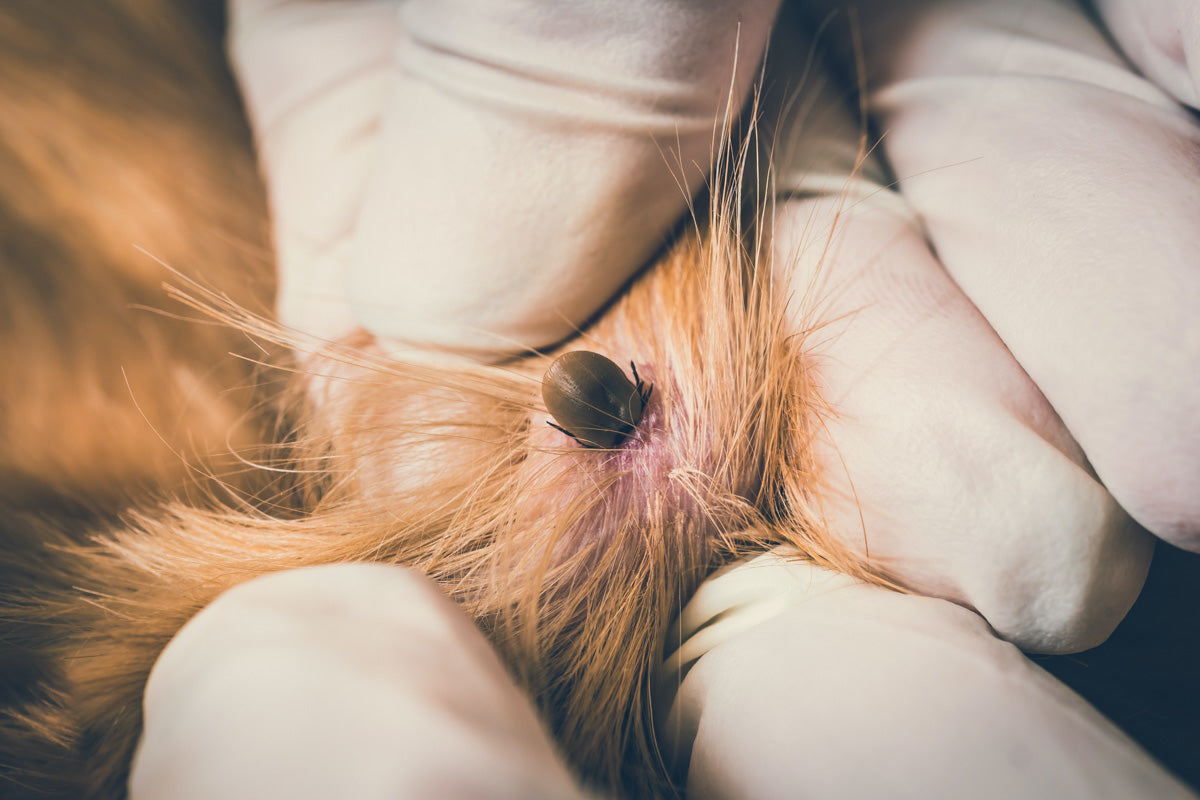Ticks are external parasites that feed on the blood of mammals, including dogs. They are commonly found in wooded areas, tall grasses, and bushes, and can easily attach themselves to your dog's skin. Ticks can be harmful to your dog's health and therefore, it is crucial to know how to check for ticks and to take steps to prevent their attachment.
One of the most obvious signs that your dog has a tick is the presence of a small, dark-coloured bump on their skin. Ticks can range in size from as small as a pinhead to as large as a grape, depending on how long they have been feeding. If you notice a bump on your dog's skin, it is essential to examine it closely and look for signs of movement or the presence of legs.
In addition to the appearance of a small, dark-coloured bump on your dog's skin, there are other symptoms you should look out for to identify tick infestations. These include:
-
Itching and scratching: Ticks can cause intense itching and irritation on your dog's skin. If your dog is constantly scratching or biting at a particular area, it may be a sign that they have a tick infestation.
-
Fever: Some dogs may develop a fever in response to a tick bite. A fever is a sign that your dog's immune system is working to fight off the infection.
-
Loss of appetite: If your dog is not eating or drinking as usual, it may be a sign of a tick-borne illness. Loss of appetite can be a symptom of several tick-borne diseases.
-
Lethargy: Ticks can cause your dog to feel lethargic and tired. If your dog seems more tired than usual or is not as active as usual, it may be a sign of a tick infestation.
It is essential to keep a close eye on your dog's behaviour and overall health, especially during tick season. If you notice any of the above symptoms, it is crucial to seek veterinary care right away. Early detection and treatment of tick-borne diseases can help prevent serious health complications and improve your dog's chances of a full recovery.
To check your dog for ticks, start by running your hands over their body, paying close attention to areas such as the head, ears, neck, and underbelly. Use a fine-toothed comb to brush through your dog's fur, as this can help to remove any ticks that may be hiding in the fur. You can also use a tick removal tool to carefully remove any ticks that you find, taking care not to squeeze or crush the tick's body.
Dogs can get ticks from a variety of sources, including walking through grassy areas or playing with other dogs that have ticks. Ticks can also hitch a ride on humans, so it is important to check yourself for ticks after spending time outdoors.
Preventing ticks on your dog involves keeping their living areas clean and well-maintained, as well as using tick repellents and regular tick checks. If you do find a tick on your dog, it is crucial to remove it as soon as possible to reduce the risk of tick-borne diseases. With proper care and attention, you can help keep your dog safe and healthy during tick season.




